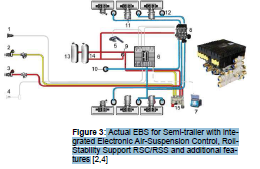EVU XXIII 2014-07 Road safety enhancing Driver Assistance Systems for commercial vehicles – from the aspect of European Regulations
Erwin Petersen
German Road Safety Association of Lower Saxony, Hannover

Abstract
ABS and advanced Driver Assistance Systems such as ESC/ESP, ACC, etc. can contribute significantly to accident avoidance. Considering the very severe accidents involving commercial vehicles, the general application of safety enhancing driver assistance systems would be of particular relevance – especially for heavy commercial vehicles. To improve the level of road safety, the EU Commission and Parliament initiated several steps with the introduction of the Type Approval and Safety Regulation 661/2009/EU in 2009. Along with other measures, the general use of important traffic-safety oriented driver assistance systems is legally required for all new road vehicles in all EU member states following a certain schedule starting in 2011. This regulation not only laid down the time frame and related vehicle types, but also prescribed basic definitions referring to UN/ECE Regulations as far as technical requirements are concerned. Whereas technical and performance requirements for Electronic Vehicle Stability Control Systems (ESC, EVSC) and exceptions of certain vehicle categories involved have been defined in the UN/ECE Regulation 13 since 2008, the requirements for Lane Departure Warning Systems (LDWS) and Advanced Emergency Braking Systems (AEBS) were published in April 2012 by official implementing regulations of the EU Commission, including vehicle types excepted from the mandatory use of such systems. In July 2013 the UN/ECE published nearly identical regulations. The requirements for EVSC and for LDWS are in line with the state of art, however, the EU and UN/ECE regulations require lower AEBS performance than systems available on the European market.
This paper describes the technical state of the art of the three system groups mentioned above. General and specific EU/ECE requirements, the related vehicle categories including their exceptions and the introduction dates for new type approvals and new registrations will be described as well. More in-depth considerations are given to advanced emergency braking systems with their associated technical challenges, state of the art solutions as well as concerns related to the EU/ECE performance requirements (i.e. recognition of obstacles and crash avoidance with “moving targets”, but recognition of obstacles and just limited reduction of crash impacts in the case of “stationary targets”). These requirements are compared to the performance of currently available emergency braking systems.
Testo completo della pubblicazione scientifica disponibile ai soli iscritti.
| Autore | Erwin Petersen German Road Safety Association of Lower Saxony, Hannover |
| Pubblicato il | |
| Tipologia |
